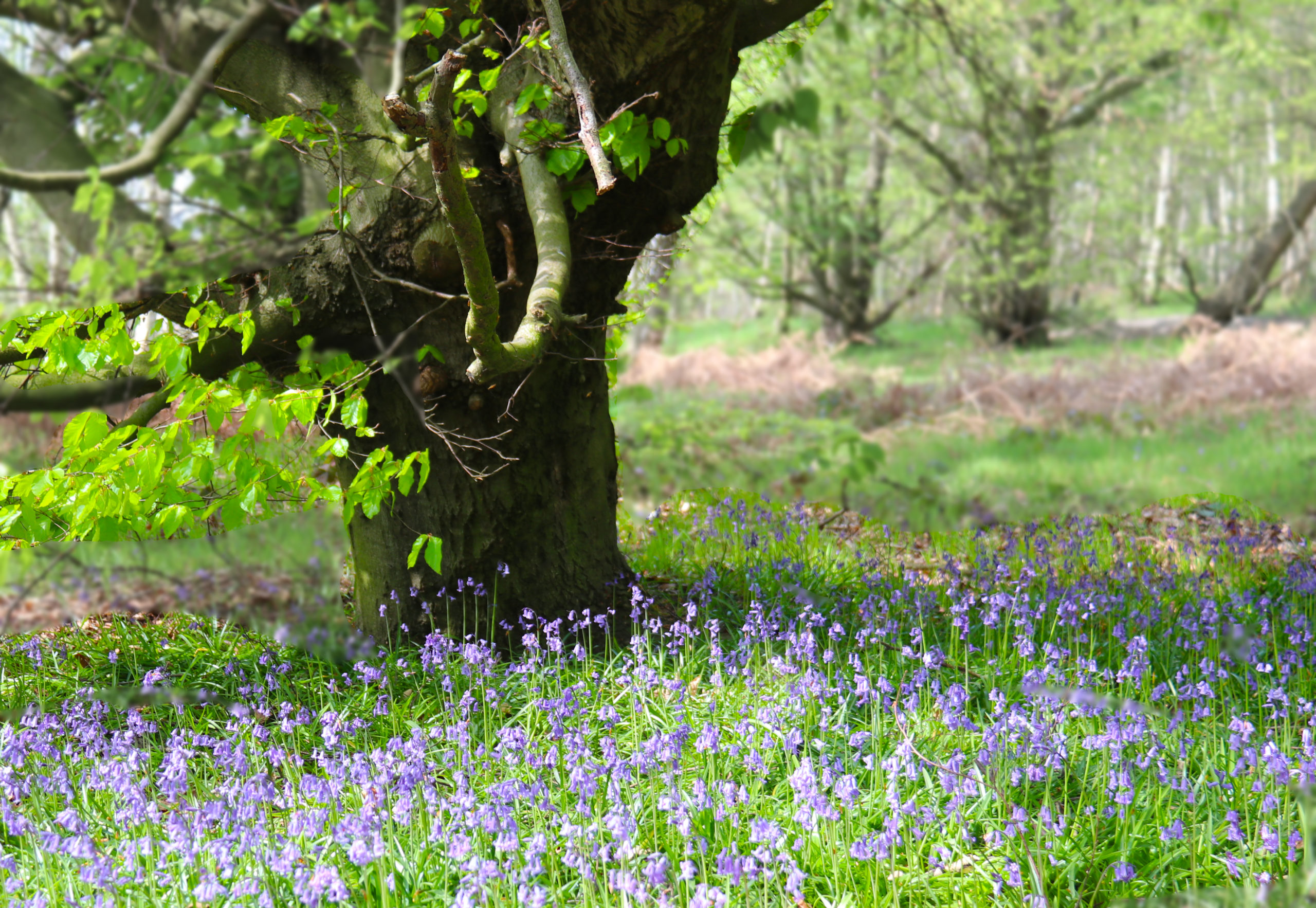Bobbing their delicate heads in the breeze, bluebells are a sign that spring is in full flow.
For just a few short weeks, breathtaking swathes of bluebells with their heady scent will be enticing you out into our ancient woodlands. Despite their fleeting appearance, native bluebells, with their deep blue flowers and drooping heads, take years to establish and spread extremely slowly – one study shows they take 35 years to spread a mere 50 metres. This makes them a great indicator species – so if you find large swathes of native bluebells in a wood, it’s likely that the wood has been there for some time – often centuries! In turn our beautiful bluebells can only survive and thrive if the woods in which they live are protected and well-managed.
However, our ancient woodlands and their unique bluebell swathes face relentless attack from development. We are still waiting to hear whether a motorway service area, including an 80-bed hotel and retail park, will be built on Smithy Wood at junction 35 between Sheffield and Rotherham. Smithy Wood is designated as a Local Wildlife Site and sits within the Green Belt. Dating back more than 850 years, the wood has been an important feature of the local landscape and plays a huge part in our local history. It supports a diverse range of locally and nationally important species – including ancient woodland flora, birds, bats, fungi and butterflies – and of course bluebells!
The planning application for Smithy Wood is currently on hold while another application for an alternative motorway service station at Junction 33 of the M1 is being prepared for a decision by Rotherham Council’s planning committee. Sheffield & Rotherham Wildlife Trust have argued against the need for an MSA at either site.
“We do not think an MSA is needed on this stretch of the M1”, says Liz Ballard, Chief Executive of Sheffield & Rotherham Wildlife Trust.
“We strongly object to the planning application for Smithy Wood, an ecologically important ancient woodland and Local Wildlife Site which supports a rich and irreplaceable biodiversity built up over many hundreds, if not thousands of years”.
“Once again, we call upon Sheffield City Council to refuse this application and work with us to protect Smithy Wood as Community Woodland for wildlife and for future generations of local people to benefit from and enjoy.”
For more information about our campaign to protect Smithy Wood, visit www.wildsheffield.com/campaign/smithy-wood
Other places to enjoy bluebells:
Sheffield & Rotherham Wildlife Trust Nature Reserve Moss Valley Woodlands, on the southern boundary of Sheffield is home to a beautiful string of ancient woodlands tucked away in a secluded valley, just a stone’s throw from the urban communities of Norton and Jordanthorpe. In the spring and early summer enjoy a stunning display of wild flowers including bluebells, as the woodlands burst into life.
Sheffield & Rotherham Wildlife Trust Nature Reserve Crabtree Ponds tucked away in Burngreave is a little oasis in an urban area. We’ve been carrying out woodland maintenance over the last five years to protect a small but important patch of bluebells – now the colony has grown significantly and the displays have gone from strength to strength.
You can also find bluebells at the north end of our Wyming Brook Nature Reserve, near the A57, and at our Blacka Moor Nature Reserve in the woodland at the bottom of Lenny Hill.
